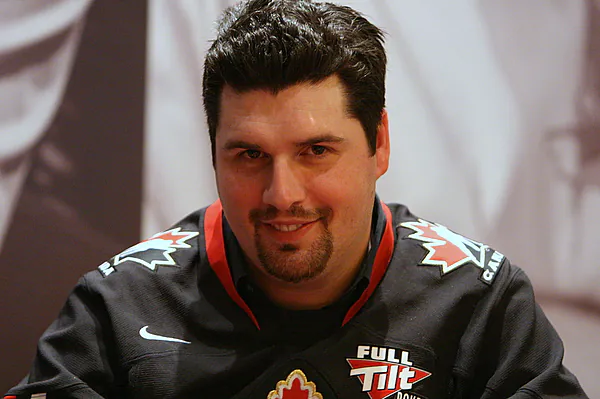How to Avoid Making Bad Bluffs in Poker
There is nothing more rewarding for a pro than calling down an amateur making a bad bluff; and there’s nothing more upsetting to an amateur than getting called. An amateur thinking at a basic level will often make a bad bluff thinking it’s a strong move. But bluffing well is an advanced skill requiring a very deep understanding of the game. The stronger your opponent, the more advanced your bluff methodology must become.
-
T&Cs Apply | Play Responsibly | GambleAware
18+ | Play Responsibly | T&C Apply
-
T&Cs Apply | Play Responsibly | GambleAware
+18 / T & C apply / Play responsible

- Fact Checked by: PokerListings
- Last updated on: July 21, 2025 · 10 minutes to read
Different Poker Players, Different Hand Memories
When there’s a car accident at a busy intersection, there is no shortage of witnesses for the police to talk to. Remarkably, even if the accident only happened a short time ago, each eyewitness will have a different take on what happened.
Even though every witness saw the exact same event, they all saw it (or remember it) differently. This is typically referred to as “Eyewitness Recall” in forensic psychology. Our interpretation of the current situation stems from our memory of the proceeding events.
“Memory consists of three stages: (1) storage, (2) retention, and (3) recall. Storage factors can impede memory accuracy when we find ourselves unable to recall information from our memory because it was never stored there. For instance, can you recall which way Lincoln faces on a penny, and where the letter identifying the mint of the penny is located?”
This means that each person witnessing a hand will have their own idea of what has happened in the current hand, and in the hands leading up to it. The players in the hand, each having different information (since they both know only their own hole cards), will each have a different take on the situation.
Example:
Imagine a situation on Day 2 of a major tournament. You hold A-Q in middle position and call a small blind’s raise. The flop comes Q-9-3, giving you top pair. By the turn, a king falls, and the small blind checks. You check back, intent on keeping the pot manageable. The river is a low card, the small blind bets half the pot, and you ultimately call to find out they were holding K-J for top pair on the turn.
Later, if you discuss this hand with a friend who was standing behind you, you might discover their impression was that you seemed uncertain on the flop, while you remember feeling quite confident after connecting with top pair. This difference in recollection highlights how two people can interpret the same hand action through distinct mental filters.
Imagine a situation on Day 2 of a major tournament. You hold A-Q in middle position and call a small blind’s raise. The flop comes Q-9-3, giving you top pair. By the turn, a king falls, and the small blind checks. You check back, intent on keeping the pot manageable. The river is a low card, the small blind bets half the pot, and you ultimately call to find out they were holding K-J for top pair on the turn.
Later, if you discuss this hand with a friend who was standing behind you, you might discover their impression was that you seemed uncertain on the flop, while you remember feeling quite confident after connecting with top pair. This difference in recollection highlights how two people can interpret the same hand action through distinct mental filters.
Imagine a situation on Day 2 of a major tournament. You hold A-Q in middle position and call a small blind’s raise. The flop comes Q-9-3, giving you top pair. By the turn, a king falls, and the small blind checks. You check back, intent on keeping the pot manageable. The river is a low card, the small blind bets half the pot, and you ultimately call to find out they were holding K-J for top pair on the turn.
Later, if you discuss this hand with a friend who was standing behind you, you might discover their impression was that you seemed uncertain on the flop, while you remember feeling quite confident after connecting with top pair. This difference in recollection highlights how two people can interpret the same hand action through distinct mental filters.
Bad Poker Bluff Examples
This first example is a standard, common instance of an amateur making a bad bluff.
Table Setup: The amateur is in early position with a slightly less-than-average stack size of $175. The pro is on the button with a slightly larger-than-average stack size of $325. The two players have been at the same table for a couple of hours with no significant history between them.
Pre-Flop: Amateur raises. Pro calls. Heads-up to the flop.
Flop: 6 9 J
Amateur checks. Pro checks.
Turn: 6 9 J 2
Amateur checks. Pro checks.
River: 6 9 J 2 J
Amateur bets the pot. Pro calls.
Amateur shows A K
Pro shows 6 7
The pro wins the pot with two pair, sixes and jacks.
In this scenario the amateur usually sits in shock, wondering how the pro could have called with nothing but bottom pair. The amateur sees the action as herself having raised pre-flop, thus giving the impression that she has a big hand.
How Not to Bluff a Poker Pro
The pro never bet any of the streets; clearly he does not have a big pocket pair. Because only the amateur has shown she has a big hand, she feels that there is no way the pro can call when the top card pairs the board.
The pro beats nothing but a bluff, and with the amateur showing strength pre-flop and playing with a tight table image, she feels that the chances she’s bluffing should seem slim to none to the pro.
The pro sees the hand very differently. Due to her tight image, the pro immediately puts the amateur on a big hand when she raises, making for an easy loose call with the suited connector. The flop gives the pro a small pair with no real strong draws.
When the amateur checks the flop, the pro now knows the amateur has one of two hands: the amateur flopped a set of jacks and is looking to check-raise, or more likely the amateur has A-K or A-Q and chose not to c-bet.
If the amateur has AA, KK, QQ or A-J, she is almost certain to make a bet with the flush draw on the flop.
The pro is now either way behind, or ahead of a player with six outs. The pro is also able to bluff having a flush if another club hits the board. If the amateur is scared of the draw, she is most likely sitting on only four outs to win now.
The turn makes no real change to the situation – when the amateur checks, the pro is now 90% sure that the amateur is on A-K or AQ. He’s willing to check behind with the lead, taking his equity rather than risking getting check-raised.
Checking behind here also sets up the amateur to make a donk bluff on the river thinking the pro will fold after showing no strength.
The river is an absolute blank as far as the pro is concerned. If he was sure the amateur didn’t have a jack on the flop, he’s even more convinced she doesn’t have one now. The amateur makes the donk bluff the pro thought she might, and snap-calls for the win.
Never a Reason to Fold
In the eyes of the amateur, this was a strong bluff, as she believed no player without a jack could make the call. The amateur had a strong read on the pro’s hand, but didn’t stop to consider the information the pro had on her.
Amateurs are always shocked that the pro could call here with nothing more than top pair, whereas looking at it from the pro’s point of view, there was never a reason to fold.
This second example, taking place an hour after the last hand, is the reverse of the first example. Here the amateur makes what she thinks is a hero call on a pro:
Table Setup: The pro is in early position now with a large stack size of $770. The amateur is on the button with a slightly larger-than-average stack size of $325.
Pre-Flop: Pro limps. Amateur raises. Pro calls. Heads-up to the flop.
Flop: 2 Q 7
Pro checks. Amateur bets. Pro calls.
Turn: 2 Q 3
Pro checks. Amateur bets. Pro calls.
River: 2 Q 7 3 A
Pro bets half the pot. Amateur calls.
Amateur shows K Q
Pro shows A J
The pro wins the pot with a pair of aces.
In this example the amateur has the correct read on the pro; she knows that the pro is on the flush draw in the hand and keeps correctly betting his top pair.
When the flush misses on the river she believes the pro is making a weak bluff with a missed draw, and calls with her pair of queens.
The amateur forgot to take her thought processes one step further. Knowing the pro is on a flush draw, it’s most commonly going to be the nut flush draw he’s holding. When the ace comes on the river, the pro did miss his flush draw, but now has the best pair.
The only hand the pro is worried about losing to here is A-Q for top two. It’s a thin value bet that works out nicely.
A Good Poker Bluff Requires a Set Up
Before you start making bluffs at your opponents, you’re going to want to take all of the possible factors into consideration.
Successfully bluffing typically requires the player to set up the bluff on an earlier street. If your opponent can’t realistically put you on a hand that beats them, your bluff is going to fail.
If you play the first four streets like you’re holding something weak, only to show sudden unwarranted strength on the river, chances are you’re going to get called down.
Most often these dark tunnel bluffs work when the player is actually value betting the best hand, only thinking they’re bluffing.
Before you make a move at a pot, take into consideration the picture of yourself you’ve painted to the other players, as well as the picture you have of them. Only if both of these align will your bluff have a high chance for success.
The best way to work on any poker skill, such as when to bluff, is to see as many hands as you can. Thanks to online poker rooms, seeing thousands of hands over a weekend is no longer a difficult task.
Advanced Bluffing Concepts
The art of bluffing has evolved significantly over the years, especially with the emergence of more precise approaches like GTO and complex simulations. While the fundamentals of knowing your opponent and selling a believable hand remain crucial, experienced players have turned to an analytical balance between exploitative and GTO-based strategies. In this section, we delve into a few modern concepts that help refine bluffing decisions.
One key factor is understanding how often your bluff needs to succeed. Calculating pot odds and break-even points for a bluff gives you the foundation to determine if a bet is profitable. When stacked with knowledge of your opponent’s calling tendencies, you can anticipate which boards they are likely to fold on and which they will call. The more accurately you assess your opponent’s range, the better your chance of executing a successful bluff.
Many pros now use solver outputs to recognize which hands are more optimal to bluff with in specific spots. Solvers often identify that hands containing blockers to an opponent’s strong holdings can be excellent choices for bluffing. Implementing these insights at the table, however, still requires a keen understanding of practical game flow and psychology.
Balancing Frequencies
Modern poker strategy emphasizes balancing bluff frequencies. If your bluffs become too predictable, strong opponents will adjust by calling more often. Conversely, bluffing too rarely can mean missing out on profitable opportunities. An optimal balance keeps opponents uncertain and allows you to capitalize on their mistakes.
Being prepared for countermoves means anticipating how an opponent might respond to your aggression. Some players are likely to raise-bluff on certain boards, especially if they sense you are continuation-betting too frequently. Others are more passive, calling down with weaker ranges instead of reraising. Keeping track of these tendencies is an ongoing task. If you notice an opponent adjusting aggressively, you may need to counter-adjust by tightening your bluff range. If you see them folding too often, you can continue bluffing with the same or slightly wider range until they adapt.
Applying these concepts consistently is challenging. Even with solver work and hours spent studying hands, in-game dynamics constantly change. Maintaining focus, adjusting to table textures, and reflecting on the logic behind your plays will ultimately help you find the right balance between representing strong hands and folding out your opponents’ equity.
FAQ
What causes beginners to make so many bad bluffs?
Many amateurs assume aggressive betting alone is enough to push opponents off their hands, but they do not consider how the board interacts with their range or the opponent’s range. This oversight leads to calling stations easily seeing through the bluff.
Why was the amateur so shocked that the pro could call with just bottom pair?
The amateur mistakenly believed her own table image and pre-flop aggression made it impossible for the pro to call without a jack. She ignored how her flop and turn checks gave away crucial information about her hand’s weakness.
How can an amateur improve bluffing techniques based on the pro’s thought process?
Observing how a pro interprets board texture, table image, and bet timing can help amateurs understand when it makes sense to represent a strong hand. This awareness involves thinking ahead about what story their betting patterns actually tell.
Are there situations where an amateur should never bluff a pro?
If the amateur has played in a way that makes it obvious to the pro they have a weak range, bluffing becomes highly risky. Missing draws or unchecked aggression signals are easy for a skilled opponent to exploit, so trying to bluff in these situations often backfires.
How do solvers help refine modern bluffing strategies?
Solvers analyze millions of hand combinations to determine how different bet sizes and hand ranges interact with various board textures. They show which hands are most profitable to bluff with under specific conditions and help players maintain balanced frequencies.
Is a bluff always better if it is consistent with earlier streets?
Typically yes, because a good bluff is built from a believable story. If you represent an overpair pre-flop but show little interest on later streets, suddenly betting big on the river might not make sense. A consistent betting pattern or check-raise line convinces opponents you have a legitimate holding.
What is the most important element to consider when bluffing at higher stakes?
The key is accurately assessing both your opponent’s range and their likelihood of deviating from GTO or solver-approved calls. High-stakes players rarely give away chips without a valid reason, so your bluff must be logically coherent and backed by a thorough read of the situation.
More beginner strategy articles:
-
- 100% up to $2000
T&Cs Apply | Play Responsibly | GambleAware
18+ | Play Responsibly | T&C Apply
-
CoinPoker4.1
- 33% Weekly
- 150% up to 2000$
T&Cs Apply | Play Responsibly | GambleAware
+18 / T & C apply / Play responsible
-
Stake.US Poker4.3
- Rakeback 5%
- $55 Stake Cash + 260K Gold Coins
T&Cs Apply | Play Responsibly | GambleAware
18+ | Play Responsibly | T&C Apply
-
- 100% up to $1000
T&Cs Apply | Play Responsibly | GambleAware
T&Cs Apply | Play Responsibly | GambleAware
-
T&Cs Apply | Play Responsibly | GambleAware
18+ | T&Cs Apply | Play Responsibly | GambleAware




User Comments
Nice article!